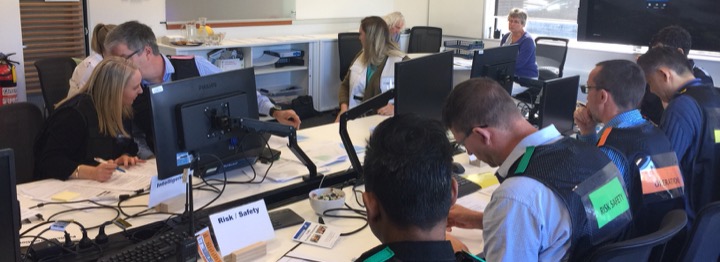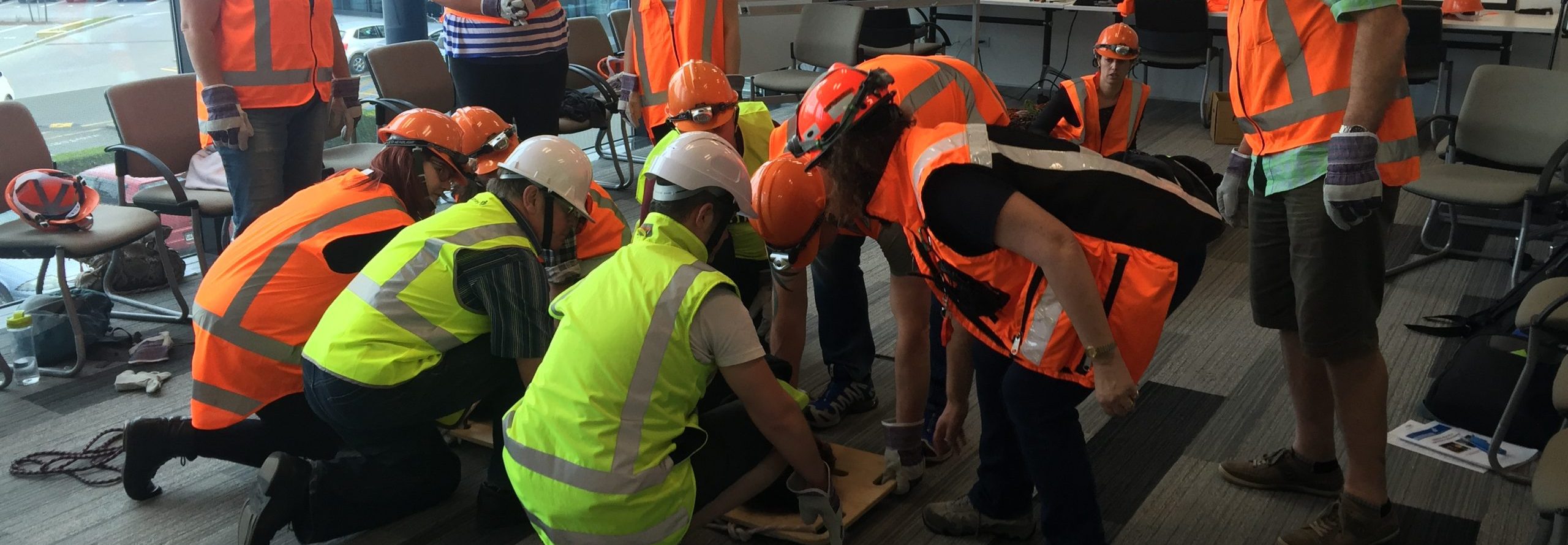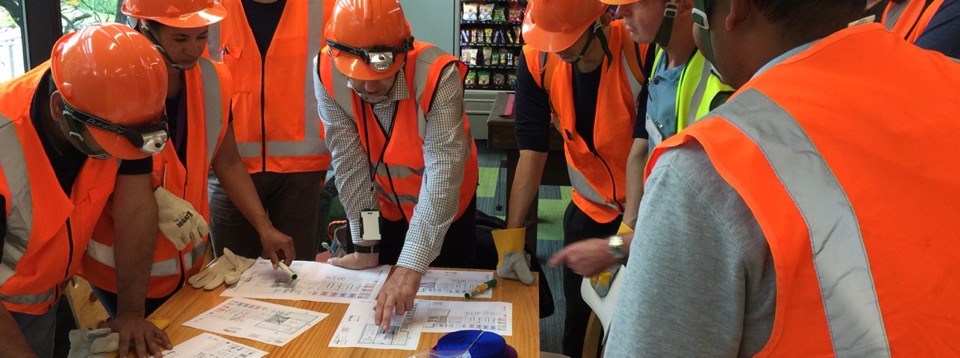CIMS Building Capacity: In 2022, we are introducing a new training package – CIMS: Building Capability. This package of training will be undertaken over a six-month period and will ...
COVID-19
Updates on COVID-19 can be found on the Government COVID-19 website.
NEMA (National Emergency Management Agency)
National Emergency Management Agency (NEMA)
NEMA was established as part of the Government’s response to a Ministerial review into better responses to natural disasters and other emergencies.
NEMA ...
CIMS 3rd Edition
As an NZQA Category 1 Training Provider, we deliver tailored training which can include assessment for NZQA Unit Standards – CIMS Levels 3, 4, 5 & 6. The CIMS 3rd edition is an updated resource ...
WREMO – Earthquake Planning Guide
National Disaster Resilience Strategy
The strategy can be downloaded from the MCDEM Website.
Deaf Communities – Emergency Information
Up until now majority of the information shared about emergencies is done in media interviews, on TV and at Public Meetings. In the event of a major emergency it is important that everyone be ready and able to follow any advise given. Civil Defence and Deaf Aotearoa will work together to get New Zealand Sign Language interpreting used in emergencies where practicable – and to jointly create emergency preparedness resources.
Click here to read full article from Hon Kris Faafoi
Click here to go to Deaf Aotearoa website
McDEM – Emergency Mobile Alert
Emergency Mobile Alert messages can only be sent by the Ministry of Civil Defence & Emergency Management, Civil Defence Emergency Management Groups, NZ Police, Fire and Emergency New Zealand, the Ministry of Health and the Ministry for Primary Industries.
If your phone is on, capable of receiving them and inside the targeted area, you should get the alerts. You can find out whether your phone can receive the alerts at civildefence.govt.nz.
Emergency Mobile Alert messages do not replace other emergency alerts. They are an additional way of warning you, along with other channels. Take immediate action. Not all phones are capable of receiving the alerts, so if you receive an alert, let others know. If you feel your life is in danger, don’t wait for an official warning. Read more …..
Drones in disaster zones could prove a lifesaver
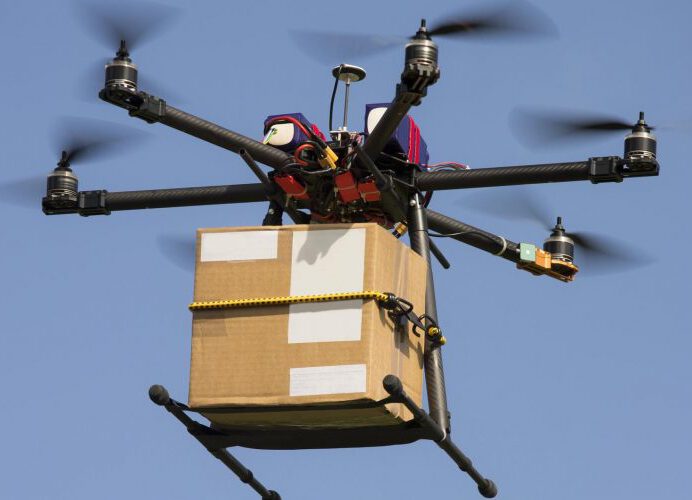
Under a collaborative agreement with the Defence Science and Technology (DST) Group, UniSA researchers have successfully trialled unmanned aerial vehicles to measure heart and respiratory rates using remote-sensing imaging systems, while hovering three metres from humans.
Video footage from the drones can detect changes in human skin tone and minute head movements to read vital signs, providing a low cost, accurate and convenient way to monitor heart rates without physical restrictions, researchers say.
The breakthrough could have many applications, including triaging disaster victims in earthquakes, detecting security and terrorism threats at airports, and remotely monitoring heart rates of premature babies in incubators.
Under the supervision of Professor Javaan Chahl, UniSA PhD students Ali Al-Naji and Asanka Perera carried out a number of experiments with 15 healthy individuals, ranging in age from 2-40 years, in both indoor and outdoor settings, and within close range of the drones.
The results were as accurate as traditional contact methods – ECGs, pulse oximeters and respiratory belts – that are currently used to monitor vital signs.
“This is the first time that video from a hovering UAV has been used to measure cardiorespiratory signals,” Chahl says.
The experiments were performed within three metres of humans but researchers expect the drones to capture information at much greater distances once the technology is further developed.
Heart monitors
The drones could help detect potential terrorists in public spaces, merely by measuring anomalies in their heart rates, according to Chahl, a Professor of Sensor Systems in UniSA’s School of Engineering.
“A person who is about to engage in violence will probably have anomalous behaviour and physiological signs.
“They might be highly agitated or unnaturally calm and in many cases they might be under the influence of drugs.
“There is a good chance that our system can detect these anomalies.”
In the developing world, expensive disposable electrodes could also be replaced with this technology to monitor vital signs remotely and eliminate the temptation to reuse the electrodes which can spread horrific skin infections between neonatal infants.
Aged care facilities may also benefit from the imaging systems which could be placed in strategic locations to monitor older people’s heart and breathing rates, Chahl adds.
“Obviously there are privacy and ethical issues around this technology that need to be resolved before it becomes common practice, but there is enormous potential to use machine vision systems to benefit society, particularly in the biomedical sphere.
“I expect we will be using this software in everyday life in the next decade.”
Source: Asia Pacific Infrastructure
Commercial building owners & earthquake-prone buildings (EPBs)
The new national framework for managing earthquake-prone buildings (EPBs) that became effective on 1 July 2017 has brought several changes.
These include a national register, new forms of EPB notice that must be displayed prominently on all EBPs and set time frames for assessment and strengthening.
Councils, engineers and commercial building owners are each assigned key responsibilities in connection with the implementation of the new system. These can be summarised as follows:
- The initial identification of EPBs by councils do not involve a detailed engineering assessment of the buildings.
- Councils are required to look at building
...
Reserve Bank sets out its stance on cyber security

Firms in the finance sector, regulators, and other authorities all have a part to play in managing cyber security risks, a Reserve Bank executive said.
They can take on this challenge while still benefiting from the opportunities of new financial technology, said Reserve Bank Head of Prudential Supervision, Toby Fiennes, in a speech delivered to the Future of Financial Services conference, in Auckland.
“The dynamic cyber environment means organisations have to be nimble in their approach to cyber security – focused on outcomes, rather than prescriptive compliance exercises,” said Fiennes.
He said that cyber-attack poses a significant threat to the global financial system, as shown by the ‘WannaCry’ ransom-ware attack that affected more than 200,000 systems around the world and the more recent ‘Notpetya’ attack.
“The nature and incidence of cyber risk is unique, meaning that typical approaches to risk management and disaster recovery planning may not be appropriate. While cyber vulnerabilities can be mitigated, the potential sources of cyber threats and the attack footprint are just too broad, so they can never be eliminated,” Fiennes said.
The Reserve Bank had thought about whether to introduce more prescriptive requirements but decided not to at this stage.
“We doubt that prescriptive regulations would appreciably improve the outcome, when the technology and threat landscape are both changing so rapidly. We will, however, review this policy stance from time-to-time to ensure that it remains appropriate,” Fiennes said.
“The Reserve Bank is closely watching the emerging wave of ‘digital disruption’ affecting the financial sector as firms react to customer demand for a more online experience. In the short term, digital disruption may result in new risks and increased instability in the financial system but in the long term, digital disruption of the banking sector may improve the efficiency of the financial system. The long-term impact on financial system soundness is less clear. Read more.
Cell broadcast alerting
The implementation of a new nationwide channel for sending alerts about emergencies to mobile phones is on track to be up and running by the end of the year.
Cell broadcast alerting is a new way of sending information to mobile phones in a set area without people needing to download an app or subscribe to a service.
The alerts will appear similar to text messages. They are received automatically and for free by all cell broadcast enabled mobile phones in the area,” former Civil Defence Minister Mr Brownlee said.
“Discussions with New Zealand’s major telecommunications companies are progressing well and we expect to have contracts signed in the coming weeks.
“Once the cell broadcast alerting system is up and running, an alert will be sent out to mobile phones through the cell towers in the affected areas in the event of an emergency.
“As no technology is 100 per cent failsafe or equally useful in all conditions and emergencies, multiple channels will continue to be used to send alerts when emergencies happen.
“These channels include radio, television, websites, various social media, smartphone apps, sirens and others.”
Read more here.
National code for quake-prone buildings leaves owners with less time, tighter rules
Owners could be left with less time and tighter rules in bringing quake-prone buildings up to code as national regulations are overhauled.
The changes, which begin on Saturday, will take decision-making away from territorial authorities with their own guidelines and create a single, national policy.
The Building Amendment Act 2016 sets a standardised time limit for the strengthening or demolition of quake-prone buildings to take place.
Regions will be divided into areas of low, medium and high seismic risk and deadlines will differ accordingly.
In Marlborough, a region deemed high risk, some building owners could be given two-and-a-half years less than under council rules to complete obligatory upgrades. Read more here.
Fire and Emergency New Zealand (FENZ) – video
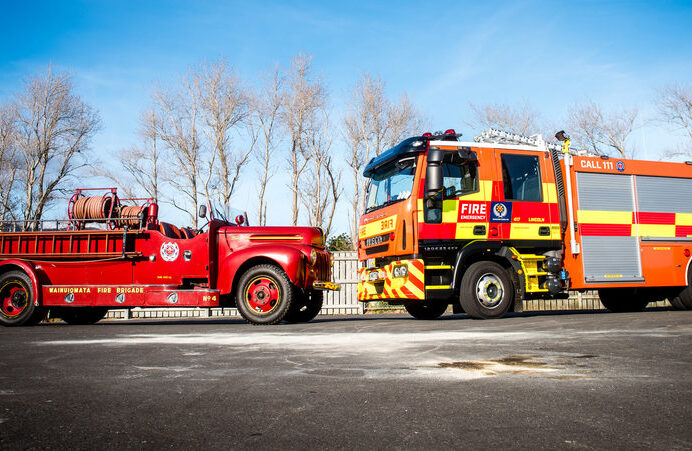
Fire and Emergency New Zealand (FENZ) was established on 1 July 2017. It is the amalgamation of the New Zealand Fire Service, the National Rural Fire Authority, 12 enlarged rural fire ...
How to protect your computer from Petya and other ransonware
The latest computer virus that is similar to Wannacry has spread very quickly across Europe overnight and could arrive in New Zealand at any time. It is a type of ...
New workplace safety laws bring drop in accidents
Businesses are reaping the benefits from changes to workplace health and safety legislation. One year on from changes to workplace health and safety legislation, a Nelson compliance expert says the region’s businesses and employees are reaping the benefits. The Health and Safety at Work Act 2015 came into force on April 4 last year and replaced the Health and Safety in Employment Act 1992. Source: Tim O’Connell at Stuff. Check out the full article here.
The bill is part of the package of changes that have been introduced following the Pike River tragedy and subsequent reviews which observed a poor health and safety record in New Zealand. According to Worksafe NZ figures, 316 people died in New Zealand workplace incidents reported between 2011 and May 25, 2017 – an average of 45 annually. The worst year during that period was 2013 when 57 people died.
So far in 2017, 22 fatalities have occurred, with Waikato (4) Canterbury, Gisborne and Northland (3 each) the main regions impacted. No deaths have occurred at a Nelson or Tasman workplace this year, although 12 deaths were reported between 2011 and 2016. According to Worksafe’s Towards 2020 document, NZ was making positive progress towards the target reductions for fatal and serious non-fatal injury.
Fatal work-related injuries are at the lowest rate since the data series began in 2002 with 2.2 fatal injuries per 100,000 fulltime equivalent employees, as were serious non-fatal work-related injuries, with 15 injuries per 100,000. This rate has decreased each year since 2011. Work-related injuries resulting in more than a week away from work are currently sitting above the 2020 target of 8.4 at 11.9 per 1000 fulltime equivalent employees.
Despite some progress, WorkSafe estimate data suggested that New Zealand’s fatal injury rate remained higher in comparison to Australia and the United Kingdom. Nelson-based health and safety consultant Peter Fisher has been involved with workplace compliance for more than 40 years, both independently and with the Department of Labour. Fisher said the current legislation was “sitting where it should be”, although some improvements could be made towards having clearer definitions around serious harm in some areas. Read more.
200 people relocating for Kaikōura jobs
Source: Chris Hutching at Stuff
The first of NCTIR’s prefabricated accommodation units to house workers on road and rail projects around Kaikōura arrived this week as more ground is prepared. Workers are pouring into Kaikōura for the earthquake rebuild as employment agency Turbo Staff sets up an office there. Turbo Staff provides workers for construction companies around New Zealand and is focusing on Kaikōura as rebuild work begins to accelerate there. Founding director Ihaka Rongonui said he had 25 staff at Kaikōura already and expected to have up to 200 relocating there over the next 18 months.
Read more on Stuff
New Zealand Underwater Association
The New Zealand Underwater Association would like to remind those undertaking diving or similar activities on the water of the following important safety messages:
- Always dive under a Dive Flag; this needs to be a minimum of 600mmx600mm in size and should ONLY be flown when people are in the water. As a skipper or driver
...
Canterbury earthquake memorial
Wellington region updates tsunami warning maps after recent earthquake
WREMO/SUPPLIED
An updated collection of tsunami warning maps for the Wellington region have been published on the Civil Defence website, after previous versions left some residents confused and frustrated.
Wellington Region Emergency Management Office (Wremo) updated the maps to better reflect the areas most at risk of tsunami damage after a large earthquake.
It has also boosted the online accessibility of the maps, making them available in .jpg and printable .pdf formats.
Click here for an interactive map.
Map showing central Wellington’s tsunami zones.
The newly available maps now cover the entire coastline, rather than just central areas. They also build on newly acquired scientific knowledge uncovered since the maps were last created, “some years ago”.
READ MORE:
* PDF tsunami maps inadequate during time of crisis
*
Coordinated Incident Management System – CIMS Planning Function
The unit standard for this function has been reviewed and updated and split into two unit standards:
Unit Standard 32159 ‘Demonstrate knowledge of the Planning function within the Coordinated Incident Management System and:
Unit Standard 32160 ‘ Apply knowledge of the Planning function within the Coordinated Incident Management System.
CIMS Function Manager Roles Levels 4 & 5
NZQA Unit Standards
| Unit Standard | Title | Level | Credits |
| Demonstrate knowledge of the Planning function within the Coordinated Incident Management System |
4 |
2 |
|
| Apply knowledge of the of the Planning process to a Coordinated Incident Management System response4 |
5 |
6 |
|
| Demonstrate knowledge of the Intelligence function within the Coordinated Incident Management System4 |
4 |
2 |
|
| Demonstrate and apply knowledge of the Intelligence function to a Coordinated Incident Management System response5 |
5 |
5 |
|
| Demonstrate knowledge of the Operations function within the Coordinated Incident Management System |
4 |
2 |
|
| Apply knowledge of the Operations function to contribute to a Coordinated Incident Management System response |
5 |
5 |
|
| Demonstrate knowledge of the Logistics within a Coordinated Incident Management System |
4 |
2 |
|
|
32166 |
Apply knowledge of the Logistics to contribute to a Coordinated Incident Management System response |
5 |
5 |
Devereux-Blum Training & Development Limited has consent to assess from the New Zealand Qualifications Authority under Section 252 of the Education Act 1989 for unit standards 32158-.32166
‘Triangle of Life’ advice resurfaces (again)
This advice has been widely discredited by leading emergency management agencies throughout the world, including New Zealand and we recommend people choose well developed, researched and official advice over unsolicited information from a self-professed expert.
- ‘Drop, cover and hold’ is the official advice of the New Zealand Government developed collaboratively with expert agencies such as GNS Science, EQC and the Society of Earthquake
...
NZQA External Evaluation & Review
Our 2022 NZQA External Evaluation and Review report is now available (see link above). As a Category 1 Training Provider, we are very proud of the review. The evaluation was very thorough in all areas of Educational Performance and Self-assessment. We appreciate all the support and feedback we receive from you, our clients. The evaluation was very thorough.
The purpose of this external evaluation and report is to provide a public statement about the Tertiary Education Organisation’s (TEO) educational performance and capability in self-assessment. It forms part of the accountability process required by Government to inform investors, the public, students, prospective students, communities, employers, and other interested parties. It is also intended to be used by the TEO itself for quality improvement purposes.
NZQA is Highly Confident in the educational performance and is Highly Confident in the capability in self-assessment of Devereux-Blum Training & Development. There are no recommendations.
Ratings against the Key Evaluation
...
Multi-Agency CIMS
 Our latest multi-agency CIMS (Co-Ordinated Incident Management System) course brought together people from a range of different organisations.
Our latest multi-agency CIMS (Co-Ordinated Incident Management System) course brought together people from a range of different organisations.
Training WCC Civil Defence Centre Volunteers
The centres collect information about the impact of an emergency and inform the Wellington Regional Emergency Management Office. There is very little equipment at Civil Defence Centres, so residents should plan to be self-sufficient.
In an emergency listen to your local radio station to hear which Civil Defence Centres are working. It’s a good idea to keep a note of your nearest Civil Defence Centre location in your home survival kit.
Volunteers
Volunteers play an important role in our efforts and in the community’s welfare – before, during and after an emergency. Volunteers with enthusiasm and commitment and a little bit of time to undertake training are needed. Volunteers work from their local emergency centre.
Volunteers are trained to perform a range of functions in the emergency centres including:
- radio communications
- operations
- welfare
- light search and rescue
If your are interested in helping as a centre volunteer contact the Wellington Emergency Management Office of your local council. The Wellington Regional Emergency Management Office can be contacted on ph 04 830 4279 or through their website.




